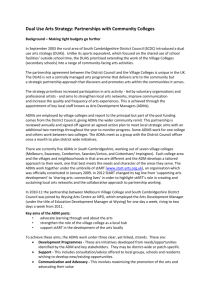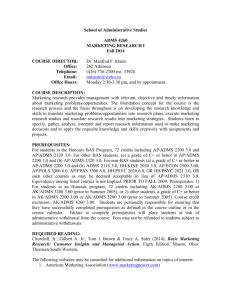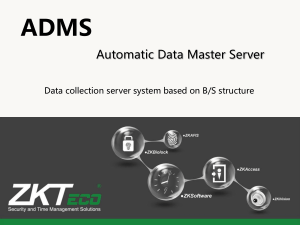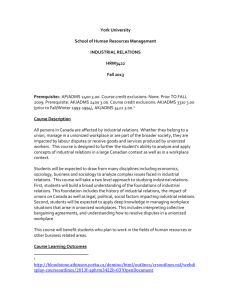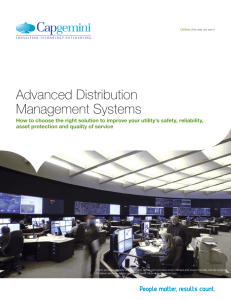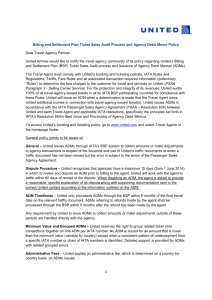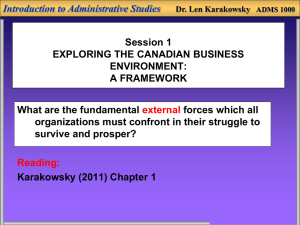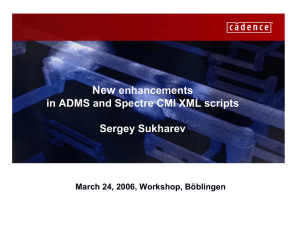the application of automatic deformation monitoring system for
advertisement
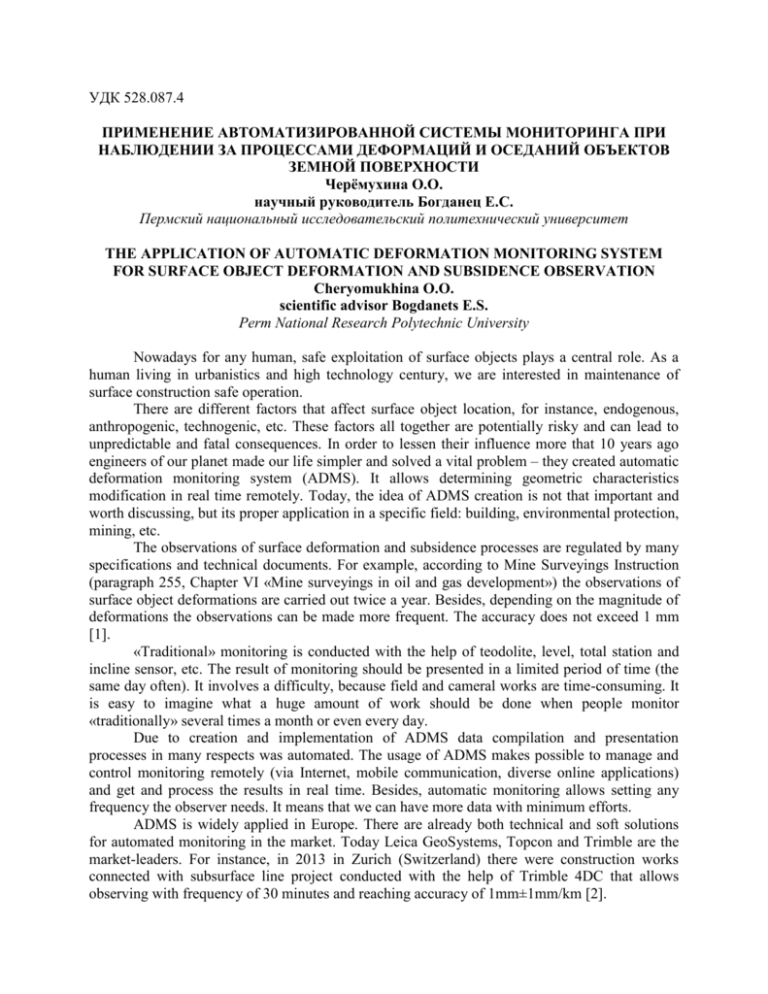
УДК 528.087.4 ПРИМЕНЕНИЕ АВТОМАТИЗИРОВАННОЙ СИСТЕМЫ МОНИТОРИНГА ПРИ НАБЛЮДЕНИИ ЗА ПРОЦЕССАМИ ДЕФОРМАЦИЙ И ОСЕДАНИЙ ОБЪЕКТОВ ЗЕМНОЙ ПОВЕРХНОСТИ Черёмухина О.О. научный руководитель Богданец Е.С. Пермский национальный исследовательский политехнический университет THE APPLICATION OF AUTOMATIC DEFORMATION MONITORING SYSTEM FOR SURFACE OBJECT DEFORMATION AND SUBSIDENCE OBSERVATION Cheryomukhina O.O. scientific advisor Bogdanets E.S. Perm National Research Polytechnic University Nowadays for any human, safe exploitation of surface objects plays a central role. As a human living in urbanistics and high technology century, we are interested in maintenance of surface construction safe operation. There are different factors that affect surface object location, for instance, endogenous, anthropogenic, technogenic, etc. These factors all together are potentially risky and can lead to unpredictable and fatal consequences. In order to lessen their influence more that 10 years ago engineers of our planet made our life simpler and solved a vital problem – they created automatic deformation monitoring system (ADMS). It allows determining geometric characteristics modification in real time remotely. Today, the idea of ADMS creation is not that important and worth discussing, but its proper application in a specific field: building, environmental protection, mining, etc. The observations of surface deformation and subsidence processes are regulated by many specifications and technical documents. For example, according to Mine Surveyings Instruction (paragraph 255, Chapter VI «Mine surveyings in oil and gas development») the observations of surface object deformations are carried out twice a year. Besides, depending on the magnitude of deformations the observations can be made more frequent. The accuracy does not exceed 1 mm [1]. «Traditional» monitoring is conducted with the help of teodolite, level, total station and incline sensor, etc. The result of monitoring should be presented in a limited period of time (the same day often). It involves a difficulty, because field and cameral works are time-consuming. It is easy to imagine what a huge amount of work should be done when people monitor «traditionally» several times a month or even every day. Due to creation and implementation of ADMS data compilation and presentation processes in many respects was automated. The usage of ADMS makes possible to manage and control monitoring remotely (via Internet, mobile communication, diverse online applications) and get and process the results in real time. Besides, automatic monitoring allows setting any frequency the observer needs. It means that we can have more data with minimum efforts. ADMS is widely applied in Europe. There are already both technical and soft solutions for automated monitoring in the market. Today Leica GeoSystems, Topcon and Trimble are the market-leaders. For instance, in 2013 in Zurich (Switzerland) there were construction works connected with subsurface line project conducted with the help of Trimble 4DC that allows observing with frequency of 30 minutes and reaching accuracy of 1mm±1mm/km [2]. What is more, ADMS was used as an architecture security device, thus it performed the second-order role. It was important because all historical buildings monitored above tunnel construction should not experience either any small deformations or its geometrical location change. It means that ADMS can solve different second-order qualitative problems being as an «industrial» unit within chain of engineers who are responsible for monitoring. In addition to aforesaid, using ADMS one can manage the risks. If we know the time of deformations reaching the point of damage (i.e. point of efficiency loss of an object), we can set the frequency of monitoring with the expectation of «making decision time» (i.e. time of response) during which any possible risk of the occurrence of unpredictable and fatal consequences can be reduced. Therefore, the frequency of monitoring should correspond both time of critical situation and time of response to deformational occurrence [3, p.88]. Now let’s discuss the appropriateness of ADMS application. There can be used an algorithm below (Figure 1). If the nature of deformations that includes rapidity and magnitude of deformation is determined, the time of response can be set. The best fit frequency is determined by the time of response and the accuracy. Note that the more times monitoring should be done (i.e. the «frequent» frequency is) the low accuracy is. However, today there is a tendency towards both accuracy and frequency increase that in turn raises a sort of a competition in the market between ADMS-makers. Project and analysis data Nature of deformation Time of response Rapidity of deformation Magnitude of deformation Frequency Measurement accuracy Automatic monitoring system Decision making Recourses and technical potential assessment «Traditional» monitoring system Figure 1. Algorithm of the appropriateness of ADMS application [3] Finally, it is noteworthly that today development in monitoring sphere is set about universal application ADMS not only abroad, but also in Russia, because this technology is multifunctional enough and concerned not only industrial sphere. ASMS opens new opportunities for studying environmental objects. When frequency is rapid, deformation and subsidence processes can be observed more qualitatively, because huge data base allows getting more detailed analysis that describes the behavior of an object in any its efficiency period. Besides, such analysis can define time period of efficiency loss that provides an opportunity to predict more careful different risks. What is more, remote communication allows managing and controlling monitoring processes in real time that, in turn, is a strong point to the observer’s safety in case of critical situation, because it is not necessary to be right near the object of monitoring. And, finally, ADMS not only boosts compilation data process, but also allows minimizing the influence of internal factors on surface object location, thus it provides efficiency and productiveness while solving diverse applied problems. References 1. РД 07-603-03. Серия 07. Нормативные документы по вопросам охраны недр и геолого-маркшейдерского контроля. Охрана недр и геолого-маркшейдерский контроль. Инструкция по производству маркшейдерских работ. – Москва: НТЦ ПБ, 2004. – Вып. 15. – 54 с. 2. EFT TOTAL STATION. Системы мониторинга TRIMBLE. Проект 4 – Новая железнодорожная ветка Durchmesserline (Цюрих, Швейцария). [Электронный ресурс] – URL: http://www.eft-ts.ru/news/1344 3. Богданец Е.С., Черёмухина О.О. Изучение процессов деформаций с изучением автоматизированной системы мониторинга. Master’s Journal. – 2014. – №1 – С. 8290.
